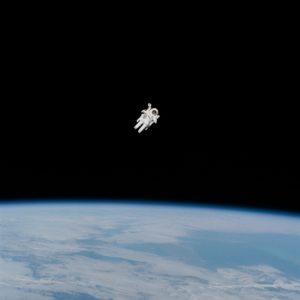Why I’m Still a Young-Earth Creationist, Even Though It’s Getting Increasingly Lonely over Here
Part 1 Part 2 Part 3 Part 4 Part 5
My concerns with Big Bang cosmology are relatively vague, given my limited exposure to physics. On the matter of biological evolution, though, I have more specific concerns.
Those concerns begin with the origin of life from non-living material. I can recall in high school biology–which I took just shortly after life actually began–attempting to reenact the moment by zapping amino acids in grape juice with electrical current. I found the experience completely unconvincing. This single event remains the most difficult of the evolutionary problems.
Once you have a living organism, however simple, where do you go from there? I think every evolutionist would agree with me that Darwinian evolution—including whatever the current form of it is—absolutely requires 3 things: mutation, which is the mechanism by which organisms can change; natural selection, which is the mechanism by which deleterious mutations can be discarded and beneficial ones preserved; and time (LOTS of time), which is necessary because there are a lot of differences between an amoeba and, say, Pele. Since all 3 of these elements are necessary, raising significant doubt about just one of them would disable the theory. I have concerns with all three.
Let’s begin with mutation.
Of course mutation happens; the reason you are not short, bald, and brown-eyed like me is that you are a mutant. There are a bazillion mutations going on right around us all the time. But Darwin and his successors didn’t simply posit that change happens; they posited that positive changes occur that slowly, gradually enable an organism to become better at surviving in its environment, eventually culminating in organisms as diverse as the life we see on the planet today.
I have 3 questions about that.
First, how frequent are beneficial mutations? I’ve seen suggested examples here and there, mostly at the level of bacteria and viruses. But the great majority of mutations seem to be either harmful—Down syndrome, fragile X, sickle-cell anemia—or at best neutral (hair color, eye color). I know, blondes have more fun, and don’t it make my brown eyes blue, and all that. But since human sexual attraction is far more complex than eye color, it’s hard to argue that blue eye color makes the survival of the species more likely. Observational science seems to indicate that mutations are on balance not a good thing for the organism.
I realize that according to the view, natural selection will kindly weed out the negatives. But doesn’t the rarity of clearly beneficial mutations mean that the process will take even longer than a few billion years? I mean, Climbing Mount Improbable involves a lot of little tiny steps.
Second, and much more important, is the problem of what mutations actually do: jumble the genetic code, either by dropping “letters” (nucleobases) or rearranging them. What it can’t do is create genetic information that is simply not there. How would one rearrange the genetic code of an amoeba, regardless of the number of steps, to produce a spine, or a lung, or an ear, or a prefrontal cortex?
Third, what observational evidence do we have of mutations crossing all lines in the alleged family tree? That’s the old question of “missing links,” of which there are far more than just the one between Bonzo and Bono. Why do they seem to be missing from the phylogenetic tree with such irritating regularity? Shouldn’t the fossil record be full of them? And isn’t it assuming your conclusion to observe microchanges within species and extrapolate that to macrochanges across orders, classes, phyla, and even kingdoms?
These questions are enough to give me serious pause on the mutation leg of the stool. But there are 2 other legs to go.
As we’ll see next time, natural selection doesn’t seem to be the cure-all for these deficiencies.


Randy Jaeggli says
“From Bonzo to Bono.” That, my brother, is truly a clever and unforgettable line!